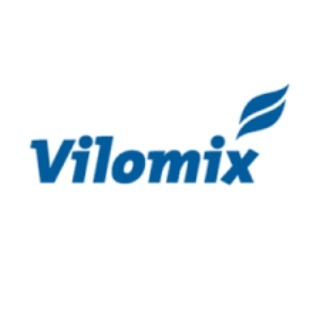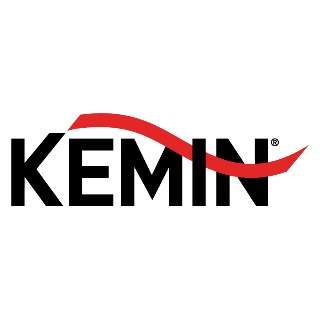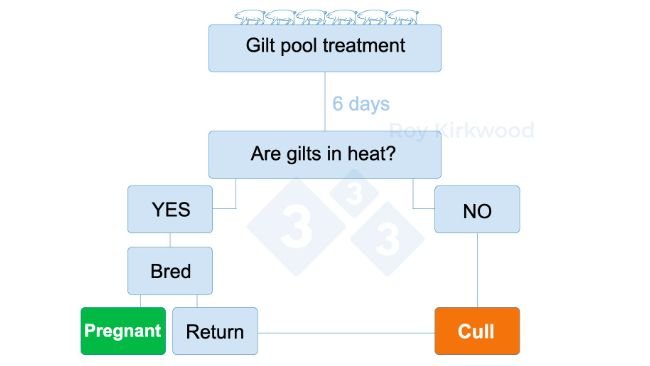
Reproductive management: Puberty induction
Why induce puberty? If I do choose to induce puberty, what do I need to do, and when?
The pig sector events all around the world
Weekly newsletter with all the pig333.com updates
Swine industry news in your email
Pig health: news and articles on PRRS, PCV2, biosecurity, etc, Pig disease guide, atlas of pathology, clinical cases…
Biocheck.UGent is an independent, risk-based, scientific scoring system for assessing the quality of your on-farm biosecurity.
A visual and practical step-by-step guide on how to perform a necropsy on a pig.
All the information about ASF: how to recognize the disease, how it is transmitted, pictures of lesions, latest news, guides, etc.
All the information on Foot and Mouth Disease in pigs: how to recognize the disease, how it is transmitted, images of lesions, latest news, guides,...
Description of the most important diseases and conditions in pigs
Images of major swine diseases
Pig disease diagnostic tool
Definition for the most commonly used pig terms
Simulator that calculates the amount of drug to add to the water when using a flow dispenser.
Weekly newsletter with all the pig333.com updates
Pig Prices by countries. Pork production and trade. News of the pig market and the raw materials
The latest slaughter pig prices in the most important pig markets. Check the evolution of the historical prices in charts and in several currencies.
Latest quotations for the main commodities used in pig feed. Historical graphs with the pig price and estimated feed price.
Figures & trends in pig numbers, pork production and pork trade.
Global production and trade data for the most important raw materials
Weekly newsletter with all the pig333.com updates
Articles on nutrition and pig feeding, characteristics of raw materials and additives for pig feed. Prices of raw materials
Latest quotations for the main commodities used in pig feed. Historical graphs with the pig price and estimated feed price.
Technical sheets of the main raw materials and additives used in swine feed. They include a comparison of nutritional values from various sources, product
Global production and trade data for the most important raw materials
Definition for the most commonly used pig terms
Use this tool to diagnose problems with the feed conversion ratio. Click on the flowchart or on the buttons within the text to navigate through the different parts of the tool.
A biweekly newsletter with the latest developments in swine nutrition
Articles on genetics and pig reproduction: genetic improvement, genomics, artificial insemination, use of hormones
Compare production data, calculate the number of sow, nursery, and finishing spaces, and visualize your tasks on the work schedule by type of BMS.
Tool that allows you to calculate the replacement rate in your farm
Definition for the most commonly used pig terms
Use this tool to find out why your farrowing rate is less than ideal. Click on the flowchart or on the buttons found within the text to navigate through the different parts of the tool.
Weekly newsletter with all the pig333.com updates
Management, pig farm management, work planning in each production stage: management in gestation, grow finish, batch farrowing
Compare production data, calculate the number of sow, nursery, and finishing spaces, and visualize your tasks on the work schedule by type of BMS.
Tool that allows you to calculate the replacement rate in your farm
Definition for the most commonly used pig terms
Weekly newsletter with all the pig333.com updates
Design of facilities and equipment for pig farms: building design, climate control, feeding systems, etc.
Biocheck.UGent is an independent, risk-based, scientific scoring system for assessing the quality of your on-farm biosecurity.
Environmental Footprint Calculator along the pork value chain.
Definition for the most commonly used pig terms
Simulator that calculates the amount of drug to add to the water when using a flow dispenser.
Use this tool to explore which slurry management strategy best fits your situation. Click on the flow chart or on the buttons within the text to navigate through the different parts of the tool.
Weekly newsletter with all the pig333.com updates
What makes us stand out is the quality and independence of our contents. Find out about the authors who make it possible. Our goal is to generate a virtual community of advanced users in the sector.

Education:
Obtained a BSc in Zoology with Applied Zoology (parasitology) from the University of Wales, UK, in 1976.
Obtained a PhD from the University of Leeds, UK, in 1981. The subject of the research was the effect of boars and boar stimuli on puberty onset in gilts.
Obtained a Doctor of Veterinary Medicine (DVM) degree from the University of Saskatchewan, Canada, in 1995.
Received Diplomate status, European College of Animal Reproduction, in 2000
Career to date:
2011 – current. Associate Professor (swine production medicine), School of Animal and Veterinary Sciences, University of Adelaide. Responsibilities include teaching into the Animal Science, Veterinary Technology, Veterinary Bioscience, and DVM programs at the University of Adelaide, and provision of on-line swine and Theriogenology teaching to other institutions on request. Current research interests include non-injection control of estrus, ovulation and parturition, and neonatal piglet survival. I am on the editorial board of Animals.
2001 - 2011. Associate Professor (swine production medicine), Department of Large Animal Clinical Sciences, Michigan State University. This appointment involves extension, teaching in the pre-clinical and clinical phases of the veterinary curriculum, and research. Clinical teaching involves a joint rotation with Iowa State and Guelph Universities. An on-line graduate course in swine reproduction has also been developed, and is currently being translated into Spanish and Thai languages. Research activities during this time involved control of parturition and improving sow fertility to artificial insemination, with a particular interest in sub-fertile sperm such as frozen-thawed or aged sperm. Hormonal approached to controlled oestrus and timed ovulation has also been investigated, including a possible role in seasonal infertility.
1999 - 2001. Senior lecturer, Department of Farm Animal and Equine Medicine and Surgery, Royal Veterinary College, University of London. In addition to teaching in the veterinary curriculum, research during this period focussed on breeding and farrowing with studies being undertaken in Australia, Italy, The Netherlands, and Spain.
1995 - 1999. Research Veterinarian, Alberta Agriculture, Food and Rural Development. During this time I initiated research programs dealing with reproduction and with management/ nutrition/disease interactions. I was an Associate Editor, Canadian Journal of Animal Science and served on the editorial board of Journal of Swine Health and Production.
I was a federally accredited veterinarian and I performed herd health duties in association with a local swine health practice. In my role as a research veterinarian, I provided swine management and reproduction advice to swine practitioners and primary producers from several provinces/states.
1987 - 1995. Research Scientist, Department of Animal and Poultry Science, University of Saskatchewan. Research during this period was varied (see publication list). I also assisted in the supervision of several graduate students and designed and taught an introductory animal physiology course.
1984 - 1987. Post doctoral fellow, Department of Animal Science, University of Alberta. The research focus during this period was nutrition/reproduction interactions. Additionally, I assisted in the supervision of several graduate students
1982 - 1984. Post doctoral fellow, Massey University, New Zealand. The primary research area was the endocrinology of early weaning. Additional areas examined included effects of partial-weaning on sow performance and effects of Regumate on fertility of primiparous sows.
1981 - 1982. Post doctoral fellow, University of Leeds, further research of boar pheromones.
I am involved with a consortium of academics and veterinarians in the production of CD ROMs dealing with management and problem solving in the breeding herd.
Publication summary:
Peer reviewed 130+
Reviews 16
Extension/Technical 80+
Updated CV 10-Mar-2023

Why induce puberty? If I do choose to induce puberty, what do I need to do, and when?
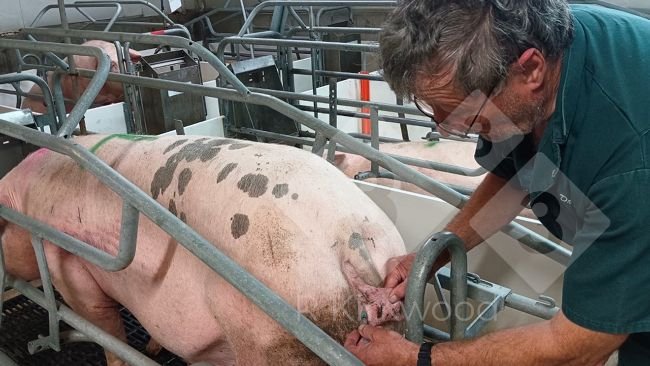
Farrowing induction is needed to improve the ability of farm staff to supervise farrowing, but you need to be strategic; do not induce unless evidence says it is needed.
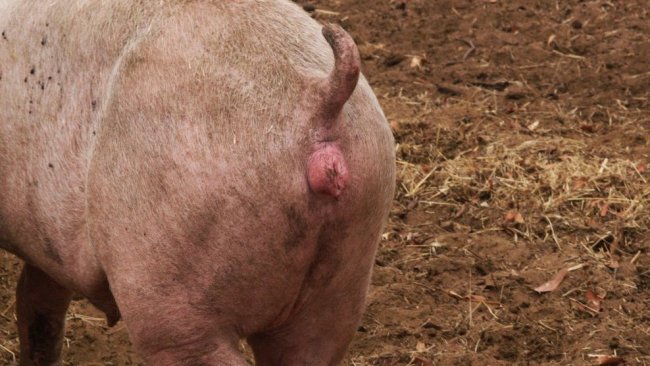
The shorter and lower dose regime saves money but there is an increased risk of follicular cyst development, which may occur at doses below 13mg/day.

Meeting batch breeding targets requires availability of enough service-ready weaned sows and gilts.
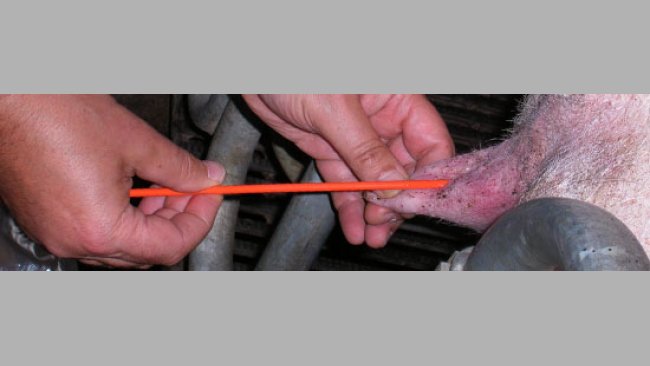
Let us assume that the expected farrowing rate and live-born litter sizes are 90% and 12.5, respectively, but that current performance is 82% and 11.3, respectively. This means that too many sows are bred but failing to farrow and those that farrow are having fewer pigs.
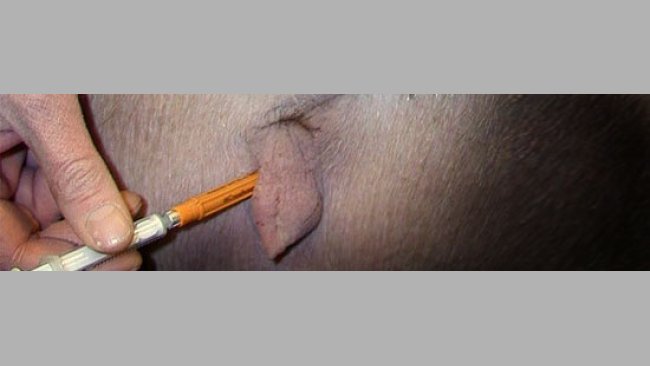
Welcome to 333
Connect, share, and interact with the largest community of professionals in the swine industry.
Celebrating 196578Users on 333!
Sign upAlready a member?




